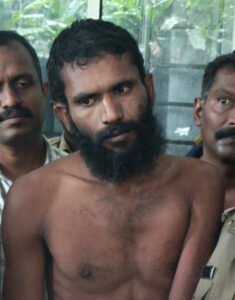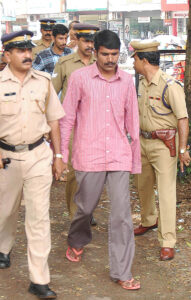Kerala’s jails, particularly in Kannur, have been criticised for functioning more as politicised zones than correctional facilities.
Published Jul 26, 2025 | 5:00 PM ⚊ Updated Jul 26, 2025 | 5:00 PM

Kannur Central Prison’s reputation justifies the scepticism. Housing several convicts with political connections, it’s seen as a place where rules bend for the powerful. (Supplied)
Synopsis: The jailbreak has reignited long-standing demands for prison reforms and the need to depoliticise jail administration. Experts recommend hi-tech surveillance in sensitive zones, internal intelligence units, regular staff rotation, strict inventory control, and automated alarm systems. Digital roll calls and biometric checks are also critical to avoid impersonation and track inmate movements.
There are many ‘political prisoners’ at the Central Prison and Correctional Home in Kannur, and they follow different political ideologies – Left, Right, and Centre.
But it has often been said that in many such cells where these prisoners are lodged, jail officials hesitate to enter. They have, quite literally, redefined the term “political prisoners”.
Traditionally, political prisoners are those incarcerated for ideology and actions against the state. Think AK Gopalan, P Krishna Pillai, and others. But in Kannur today, “political prisoners” often refers to those jailed for crimes linked to political violence and murder. For political parties, they are the new-age freedom fighters.
The recent jailbreak and recapture of Govindachamy, convicted in the 2011 rape and murder of a young woman, exposes the pathetic state of the prison, where these so-called political prisoners virtually run the show. Systems are eroded, enabling smuggling, illegal mobile phone use, and now, an audacious jailbreak.
Govindachamy, a notorious criminal with partial physical disabilities, escaped from Kannur Central Prison’s high-security Cell No. 10 in the early hours of 25 July. His escape has reignited public outrage and highlighted the crumbling state of prison security.
His notoriety began with the 2011 rape and murder of the young woman who boarded the Ernakulam-Shoranur passenger train. He followed her into the ladies’ compartment and brutally attacked her. Soumya was later found gravely injured by the tracks and later, succumbed to her injuries. The postmortem revealed severe head trauma, raising doubts over whether she jumped or was pushed out of the train.

Govindachamy was recaptured a few hours after his escape from jail. (Supplied)
Dr. Sherly Vasu, the forensic expert who conducted the autopsy, stated that the woman’s head injuries had occurred before she fell out of the train, supporting the theory that she was pushed out. She testified that the injuries were so grave that Soumya couldn’t have acted consciously after sustaining them. Yet, this vital evidence failed to secure a murder conviction from the higher courts despite a trial court verdict that awarded capital punishment.
The Supreme Court commuted his death sentence, citing a lack of direct eyewitnesses and ambiguity over the fall. This sparked public outcry from women’s groups and legal experts who felt justice had not been fully served. The ruling exposed a major weakness in the legal system’s handling of cases dependent on circumstantial and forensic evidence.
In the lead-up to his escape, Govindachamy reportedly altered his diet from rice to chapatis to shed weight and applied salt to corrode the iron bars, an old escape trick. This ‘health-conscious’ prisoner had earlier staged a hunger strike demanding biriyani. Ironically, none of this triggered suspicion. A hacksaw blade used in his escape went unnoticed for weeks. How he acquired and hid it, despite his limited mobility, suggests insider help or gross negligence.
Though recaptured hours later from a nearby well, his escape exposed glaring flaws in prison security. This was no cinematic breakout. No tunnels or technology – just rusted bars, knotted bedsheets, makeshift cloth ropes, and unmanned perimeters. How did a physically disabled man under supposed surveillance escape a “fortress-like” prison undetected?
In 2013, ‘Ripper’ Jayanandan – an accused in eight murder cases – escaped from the same prison using a similar method. He remained free for three months. That Govindachamy could repeat this method a decade later highlights continued security failures.
Reports confirmed he used cloth ropes and metal drums to scale prison walls. The electric fence was, apparently, non-functional, and it is unclear whether surveillance cameras were operating. No officer noticed his absence until the morning roll call, though he had broken the bars of his cell door and scaled the prison walls earlier. Even the presence of metal or plastic drums in a restricted zone raises serious concerns.
This was not a momentary lapse but a failure built on weeks of neglect and systemic decay, said a former Prisons Department official.
There are whispers of external coordination. He reportedly lingered outside the walls before vanishing. He was eventually found in a well after being spotted by locals. From the time he was first jailed, rumours circulated about gangs — especially one in Panvel — backing him, suggesting he was more than a lone criminal.
Given the jail’s reputation for unauthorised mobile use, covert communication is suspected. The theory of insider help is gaining traction because a daring escape by a disabled man seems implausible without assistance.

A file photo of Govindachamy. (Supplied)
Kerala’s jails, particularly in Kannur, have been criticised for functioning more as politicised zones than correctional facilities.
Following the escape, four officials, including the head warden, were suspended. A statewide security audit of jails was announced, and Govindachamy has since been shifted to another jail. But will this lead to real reform or be another symbolic gesture?
Kannur Central Prison’s reputation justifies the scepticism. Housing several convicts with political connections, it’s seen as a place where rules bend for the powerful. Surprise checks are rare. Disciplinary actions appear selective.
The jailbreak has reignited long-standing demands for prison reforms and the need to depoliticise jail administration. Experts recommend hi-tech surveillance in sensitive zones, internal intelligence units, regular staff rotation, strict inventory control, and automated alarm systems. Digital roll calls and biometric checks are also critical to avoid impersonation and track inmate movements.
Despite promises, Kerala’s prisons still rely on outdated infrastructure. The touted “digital jail monitoring” system is still a paper tiger! Kannur’s cameras are often inoperable; the electric fence failed during Govindachamy’s escape. Whenever the surveillance cameras are repaired, the next day, they are damaged, according to the officials. Such gaps expose the hollowness of the state’s security claims.
At the heart of this is a grim irony: a man convicted of one of Kerala’s most horrifying crimes escaped with relative ease and was found just a few kilometres away. Was he waiting for a signal? Or was this just the beginning of a broader plan?
Though the police recaptured him quickly, the credibility of the system lies in tatters. This wasn’t just an administrative breakdown; rather, it was a moral and institutional failure. Justice was derailed, not just by incompetence but possibly by complicity.
The real question is not just how Govindachamy escaped, but how many more like him are lying in wait behind Kerala’s prison walls, protected by a system too blind, politicised, or compromised to stop them.
(Edited by Majnu Babu).
